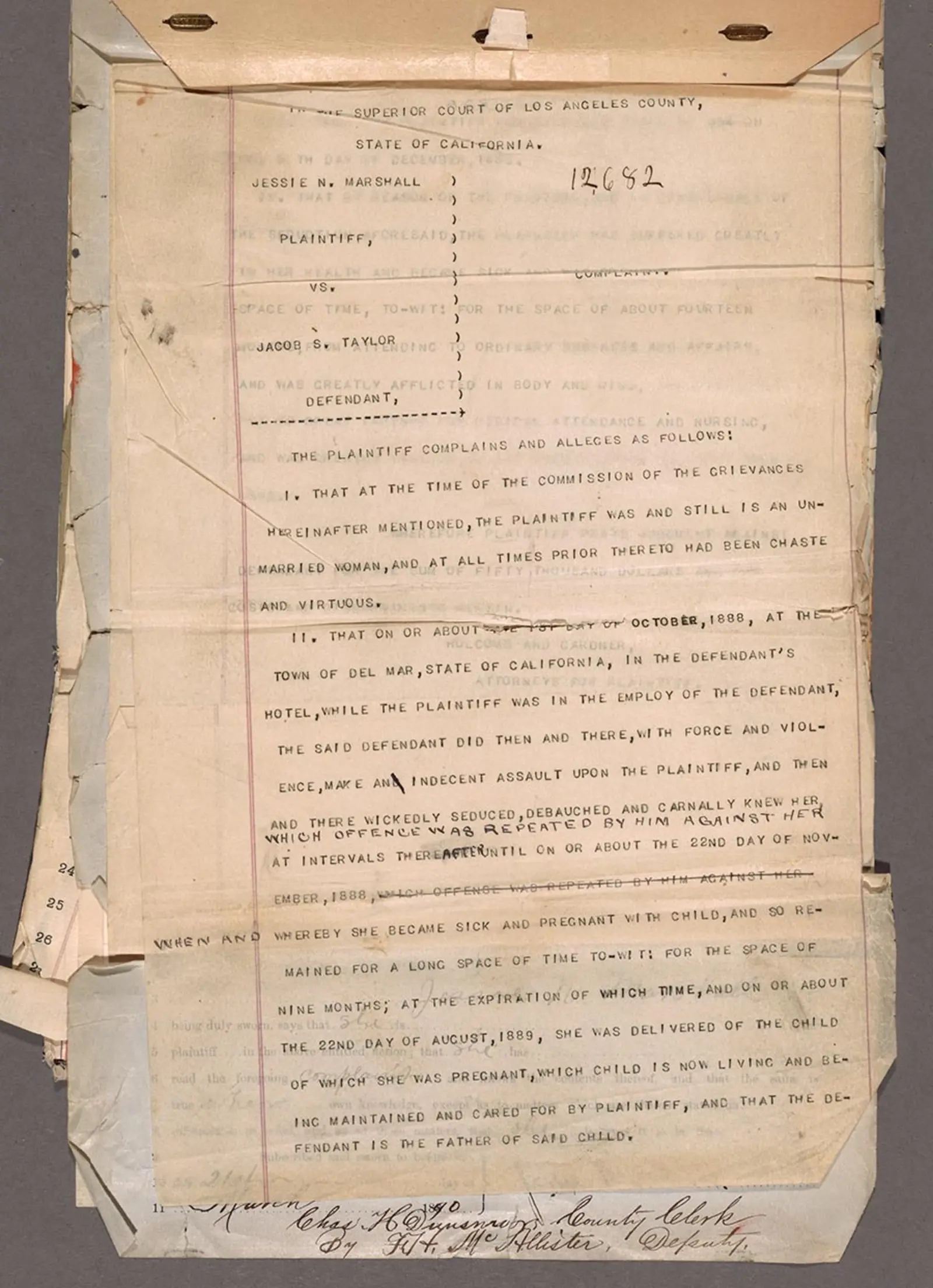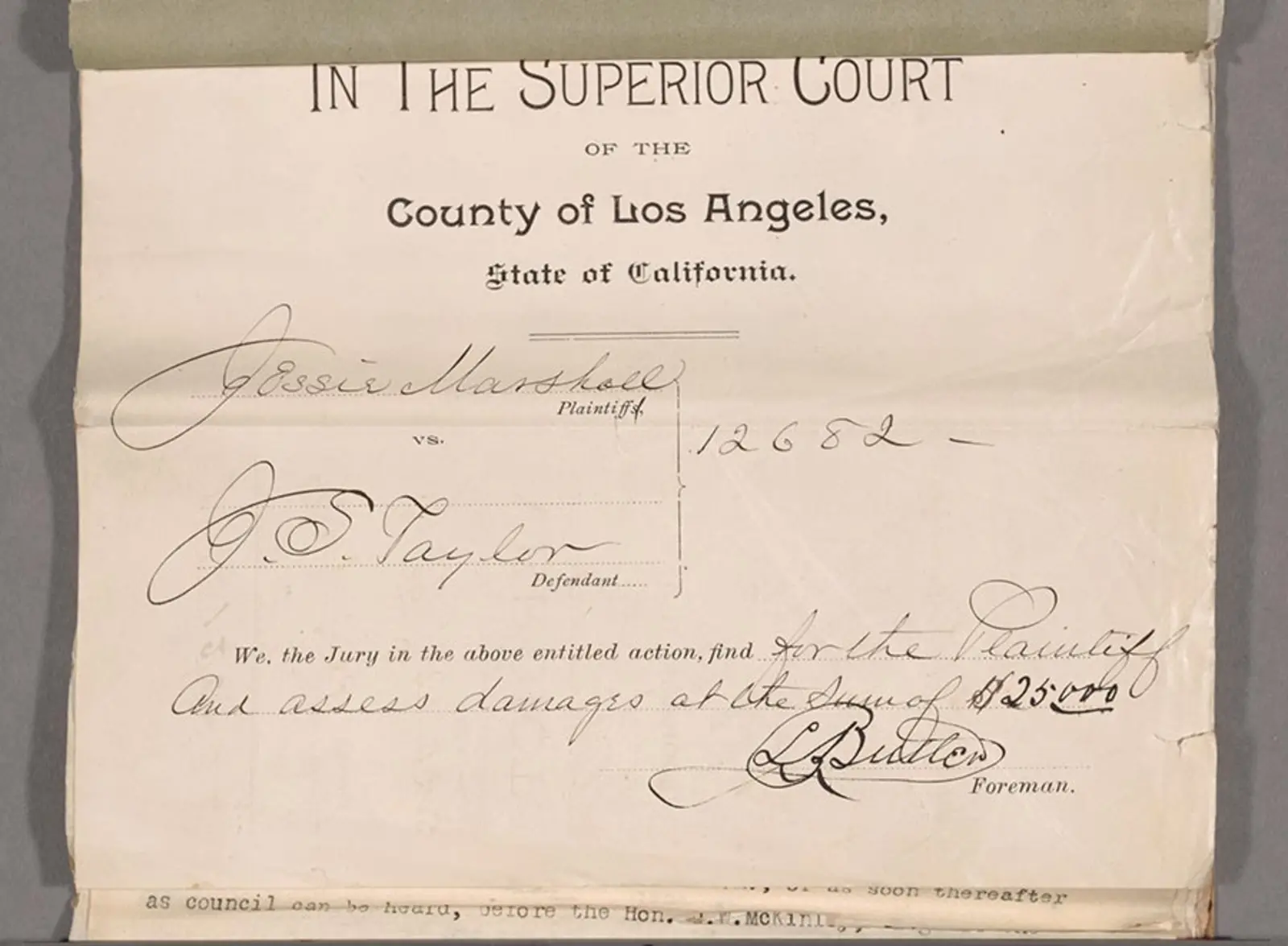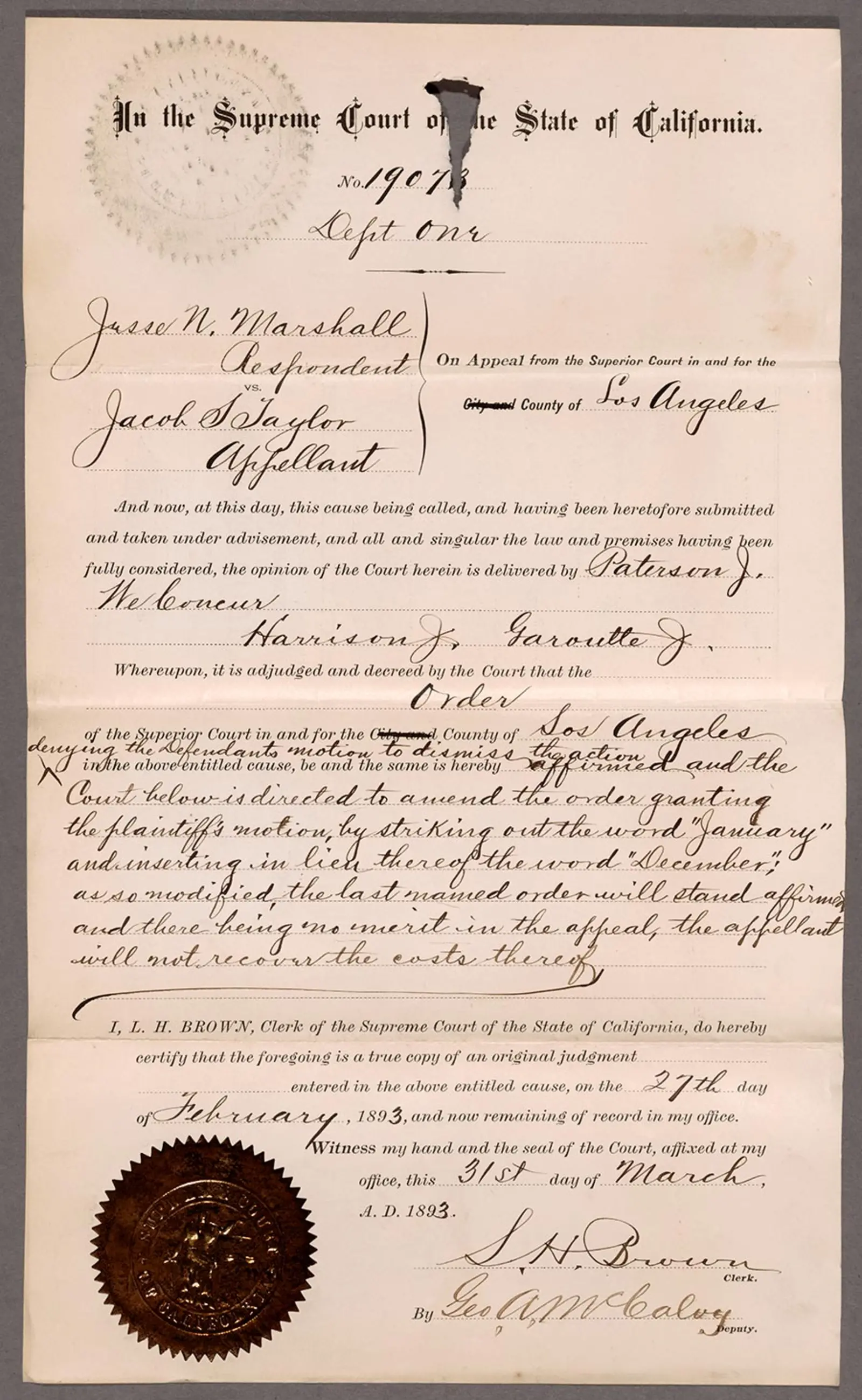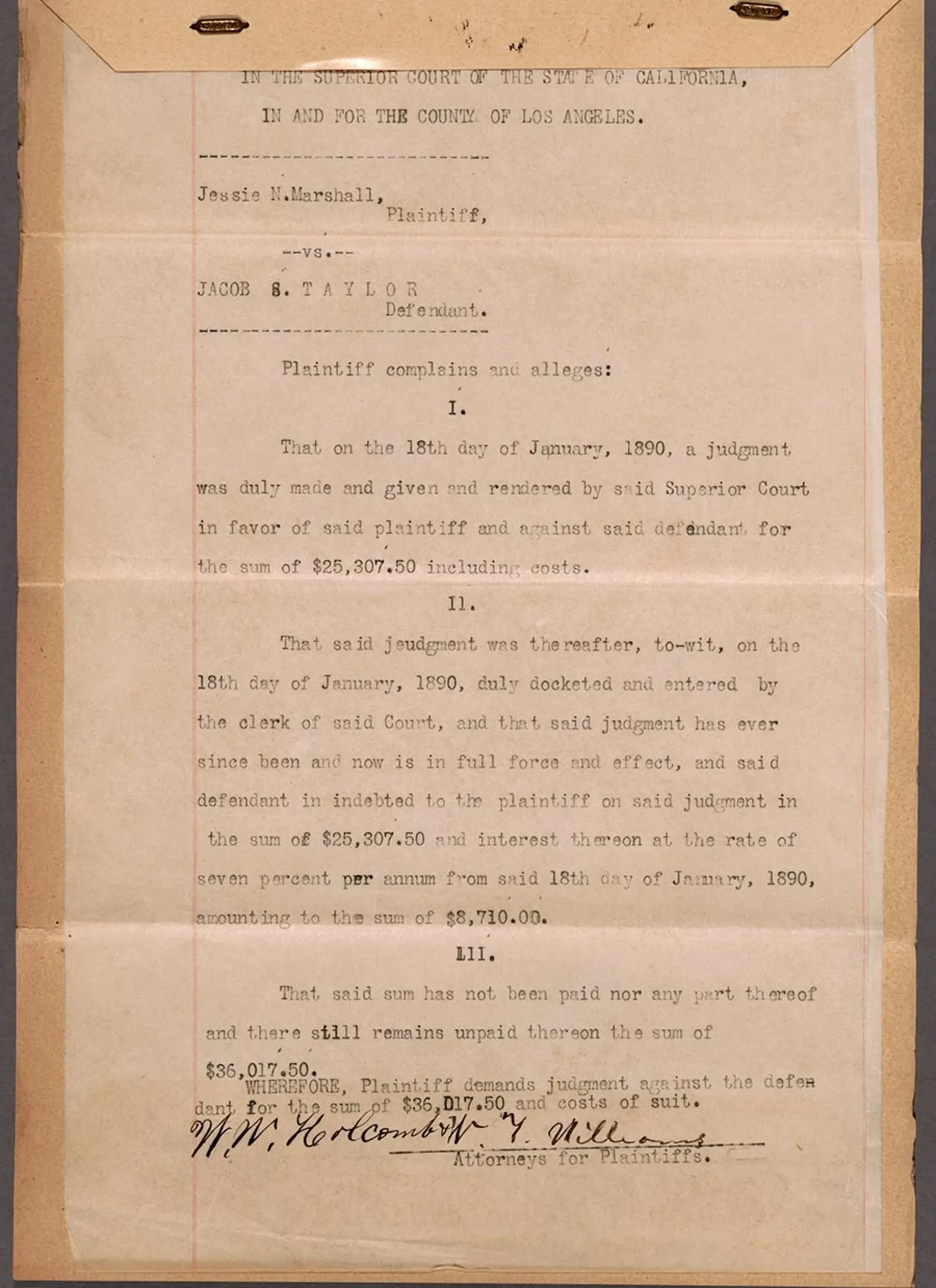Jessie N. Marshall v. Jacob S. Taylor complaint, page 2, March 22, 1890, case number 12682, Superior Court, Los Angeles Area Court Records. The Los Angeles Herald covered the Superior Court trial from December 1890 to February 1891 and the California Supreme Court ruling from March to April 1893. | The Huntington Library, Art Museum, and Botanical Gardens.
In March 1890, a waitress named Jessie N. Marshall sued her former employer, alleging that he befriended, seduced, and impregnated her. Marshall was 16 at the time; her boss, Jacob S. Taylor, was considerably older and the owner of the hotel where she worked.
Her experience with a predatory boss and Taylor’s strategy of impugning her character brings to mind many accounts of #MeToo survivors. Cases like Marshall v. Taylor from the Los Angeles Area Court Records collection historicize the coercive power that male employers held over working-class women whose job options were limited in 19th-century California.
At the time that Taylor pursued Marshall, she was unmarried and, according to a court document, “chaste and virtuous.” Then, one night in October 1888, their employer-employee relationship took a horrifying turn when Taylor used “force and violence” to make “an indecent assault” upon her. The young waitress contended that Taylor “wickedly seduced, debauched, and carnally knew her” and pursued sexual encounters with her until “she became sick and pregnant with child.”
Jessie N. Marshall v. Jacob S. Taylor complaint, page 1, March 22, 1890, case number 12682, Superior Court, Los Angeles Area Court Records. The file contains pleadings from the civil trial, Taylor’s request for a new trial, the California Supreme Court’s ruling, and Marshall’s efforts to recover the award. | The Huntington Library, Art Museum, and Botanical Gardens.
In fall 1889, the Canadian teenager delivered a baby. The Los Angeles Herald described the girl’s appearance at trial as having a great effect on public spectators and the jury. Because claims of rape rarely succeeded in court at the time, Marshall’s best legal option was a civil claim of seduction. She demanded $50,000 for the “great expense for medical attendance and nursing” and other damages due to her being “prevented for a long space of time … of about 14 months, from attending to ordinary business and affairs.” Unable to earn a living because of difficulties caused by her pregnancy and subsequent recovery, she sought compensation for lost wages, her damaged reputation, and child support.
Marshall v. Taylor became a cause célèbre in the winter of 1890–91. Spectators listened to details about the married hotelier’s schemes to meet the teenager for sexual encounters from October 1888 through spring 1889. Taylor enlisted an employee, Dennis O’Brien, to act as a go-between and transport Marshall to Phoenix in April 1889 for a tryst. O’Brien faced criminal charges for perjury, and Taylor faced a charge for abduction of an underage female for the purpose of prostitution stemming from testimony about the Phoenix trip. At the time in California, moral reformers were gaining momentum in anti-trafficking campaigns, so the case held broad interest. These reformers foreshadowed national organizing by Progressives that culminated in red-light abatement laws intended to curtail prostitution and the federal White Slave Traffic Act of 1910 (Mann Act).
Jessie N. Marshall v. Jacob S. Taylor verdict, filed Dec. 18, 1890, case number 12682, Superior Court, Los Angeles Area Court Records. The verdict reads: “We the Jury, in the above-entitled action, find for the Plaintiff and assess damages at the sum of $25,000.” | The Huntington Library, Art Museum, and Botanical Gardens.
The original case reveals that Taylor denied paternity and named another man as the father of Marshall’s child; his witnesses also challenged Marshall’s claim of chastity and virtue prior to her seduction. Nevertheless, the jury found Taylor guilty and awarded Marshall $25,000 (equivalent to roughly $850,000 today) in damages plus court costs. Taylor appealed and claimed a new alibi, but the California Supreme Court upheld the lower court’s verdict in 1893.
Despite her best efforts to make Taylor pay the judgment, Marshall never received a penny. Like Marshall, working-class women of various racial and ethnic backgrounds, nationalities, ages, and marital status faced similar precarious situations with bosses, customers, and boardinghouse tenants in early California—the kinds of situations that the #MeToo movement has revealed persist today.
The Los Angeles Area Court Records, an extensive collection of historical cases that the Los Angeles Superior Court placed on long-term deposit at The Huntington in 1996, offer researchers like me invaluable evidence of everyday contestations over sexuality and gender relations in early California, the blurring of lines between sexual consent and coercion, and abuses of women whose economic survival was at stake.
Erika Pérez is an associate professor at the University of Arizona, a 2023–24 National Endowment for the Humanities Fellow at The Huntington, and author of Colonial Intimacies: Interethnic Kinship, Sexuality, and Marriage in Southern California, 1769–1885 (University of Oklahoma Press, 2018). She is currently researching a book on gender and sexual regimes in 19th-century California.






